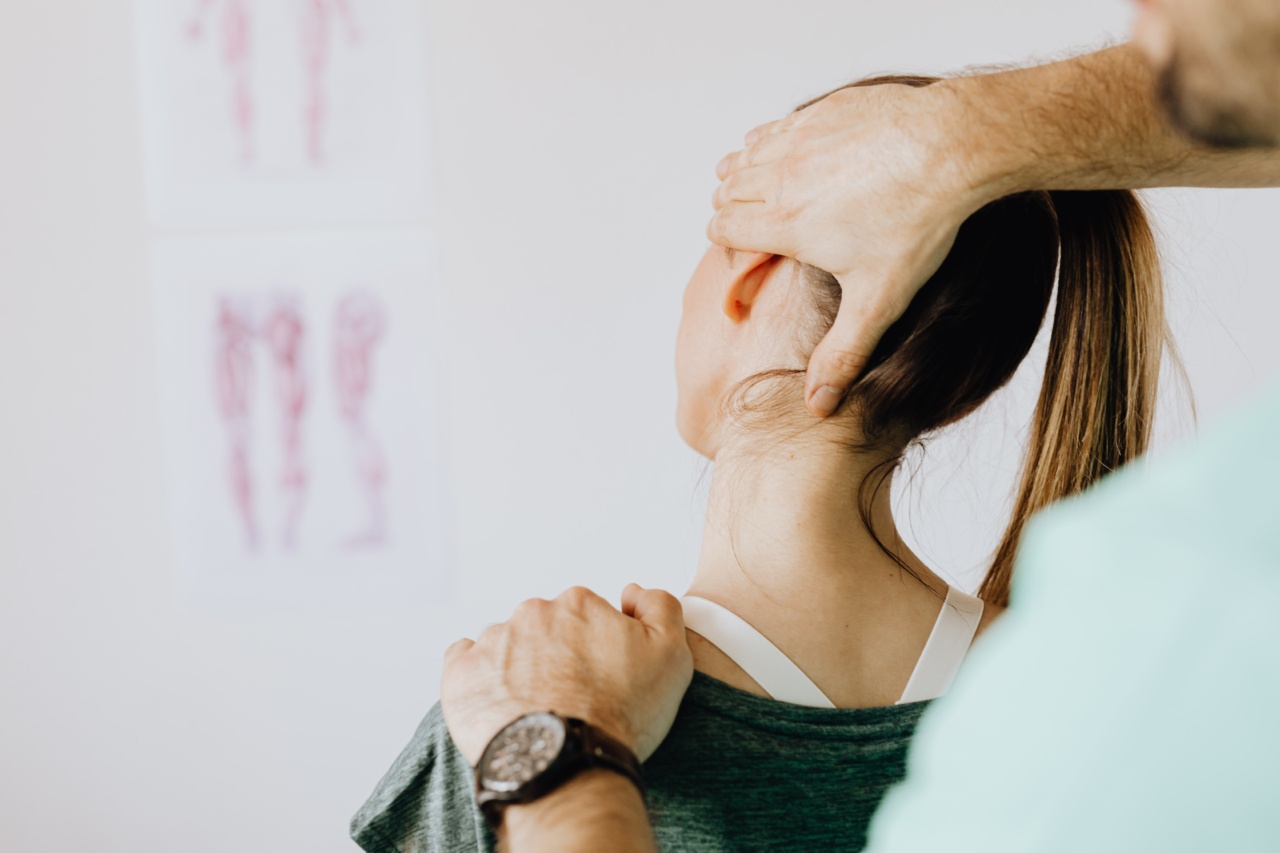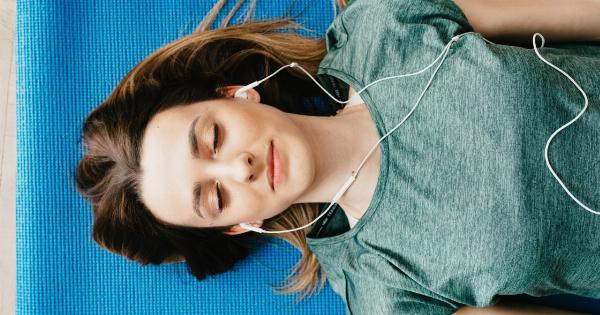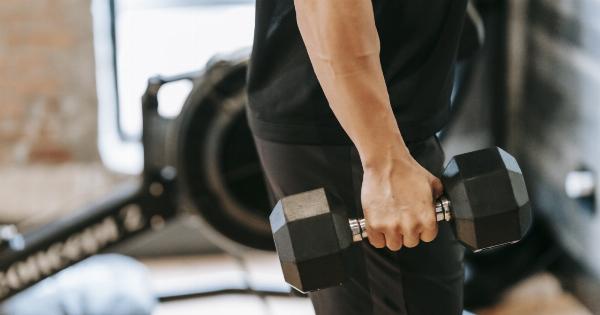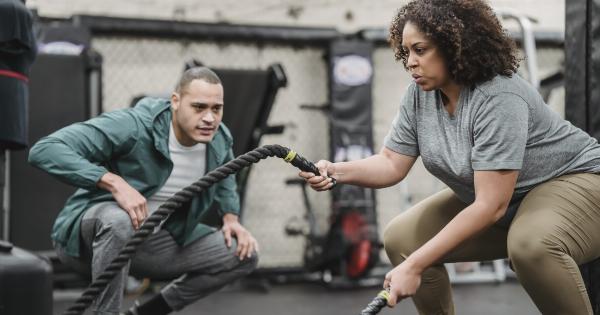Urinary incontinence is a common and often embarrassing condition that affects millions of people worldwide.
It involves the involuntary leakage of urine, which can be caused by various factors such as weak pelvic floor muscles, hormonal changes, and nerve damage. While there are several treatment options available, including medication and surgery, incorporating specific exercises into your daily routine can be highly effective in managing and even eliminating urinary incontinence symptoms.
1. Kegel Exercises
Kegel exercises are well-known for their ability to strengthen the pelvic floor muscles, which play a crucial role in controlling urinary flow. To perform Kegel exercises:.
- Identify the muscles: The easiest way to locate your pelvic floor muscles is by attempting to stop the flow of urine midstream. The muscles you use to do this are the ones you’ll be targeting with Kegels.
- Start slow: Empty your bladder and lie down comfortably. Contract your pelvic floor muscles for 3-5 seconds, then relax for the same duration. Repeat this exercise 10 times, three times a day.
- Gradually increase intensity: As your muscles strengthen, aim to hold the contractions for longer periods, working your way up to 10 seconds at a time. Be sure to rest for an equal amount of time in between each contraction.
2. Pelvic Floor Bridges
Pelvic floor bridges are another effective exercise for treating urinary incontinence. This exercise not only strengthens the pelvic floor muscles but also engages the glutes and core. Here’s how to do pelvic floor bridges:.
- Lie on your back with your knees bent and feet flat on the floor, hip-width apart.
- Engage your pelvic floor muscles and lift your hips off the ground until your body forms a straight line from your knees to your shoulders.
- Hold this position for a few seconds while maintaining a strong pelvic floor contraction.
- Lower your hips back down to the starting position and repeat the movement for 10-15 repetitions.
3. Squats
Squats primarily target the lower body muscles, including the pelvic floor, glutes, and quadriceps. By strengthening these muscles, squats can significantly help reduce urinary incontinence symptoms. Follow these steps to perform squats correctly:.
- Stand with your feet shoulder-width apart and toes pointing slightly outward.
- Engage your core muscles, keep your back straight, and lower your body as if you were sitting back into a chair.
- Go as low as you comfortably can and then push through your heels to return to the standing position.
- Repeat for 10-12 repetitions, gradually increasing the number as you gain strength and endurance.
4. Pilates
Pilates exercises focus on improving core strength, flexibility, and posture. By incorporating exercises that specifically target the pelvic floor, Pilates can help alleviate urinary incontinence symptoms. Here are a few Pilates exercises to try:.
- Single Leg Circles: Lie on your back with one leg extended towards the ceiling. Rotate your leg in a circular motion, keeping your core engaged and your pelvic floor muscles activated. Repeat on the other leg.
- Supine Arm and Leg Reach: Lie on your back with your arms extended overhead and your legs bent. Slowly extend one leg while reaching the opposite arm above your head. Keep your pelvic floor engaged throughout the movement.
- Pilates Bridge: Lie on your back with your knees bent and feet flat on the ground. Lift your hips off the floor while pressing into your feet and engaging your pelvic floor muscles. Hold for a few seconds before lowering back down.
5. Yoga
Yoga is known for its myriad of health benefits, including improved strength, flexibility, and relaxation. Certain yoga poses can specifically target the pelvic floor muscles, making them beneficial for managing urinary incontinence.
Here are a few yoga poses to incorporate into your routine:.
- Malasana (Squat Pose): Begin in a wide-legged squat position, keeping your feet parallel and your heels on the floor. Press your palms together at your chest and gently push your elbows against the inner thighs to open the hips and engage the pelvic floor.
- Bridge Pose: Lie on your back with your knees bent and feet flat on the floor. Press into your feet to lift your hips off the ground, while keeping your pelvic floor muscles engaged. Hold for a few breaths before releasing.
- Child’s Pose: Start on your hands and knees, then sit your hips back onto your heels while extending your arms forward. Allow your forehead to rest on the mat while maintaining a gentle engagement of the pelvic floor muscles.
6. Biofeedback Training
Biofeedback training is a technique that helps you become more aware of your body’s physiological processes.
It can be particularly useful for individuals with urinary incontinence as it assists in strengthening the pelvic floor muscles and promoting better bladder control. Biofeedback devices, such as vaginal or anal sensors, are used to monitor muscle activity during exercises. The feedback received helps guide you in improving muscle coordination and strength.
7. Weighted Vaginal Cones
Weighted vaginal cones are small, tampon-shaped devices that come in various weights. They are designed to be inserted into the vagina, and their weight prompts the pelvic floor muscles to contract, effectively strengthening them over time.
Start with the lightest cone and gradually progress to heavier ones as your muscles become stronger. Aim to hold the cones in place for at least 15 minutes a day, gradually increasing the duration as you progress.
8. Bladder Training
Bladder training involves gradually increasing the duration between bathroom trips to improve bladder capacity and control.
By following a set schedule and resisting the urge to urinate until the specified time, you give your bladder an opportunity to stretch and hold more urine. Begin by delaying urination for a few minutes, gradually increasing the interval by 15 minutes each week until you can comfortably hold urine for longer periods.
9. Diet and Fluid Management
While not an exercise per se, diet and fluid management play a crucial role in managing urinary incontinence symptoms. Certain foods and beverages can irritate the bladder or act as diuretics, increasing urine production.
By making dietary adjustments and adopting healthy fluid intake habits, you can better manage your symptoms. Consider reducing your consumption of caffeine, alcohol, artificial sweeteners, and spicy foods, all of which can exacerbate bladder issues.
10. Breathing Exercises
Deep breathing exercises promote relaxation and reduce stress, which can contribute to improved bladder control. The technique involves inhaling deeply through your nose, allowing your abdomen to rise, and then exhaling slowly through your mouth.
Practice deep breathing exercises throughout the day, especially during moments of stress or when you feel the urge to urinate. By incorporating relaxation techniques into your routine, you may find your urinary incontinence symptoms becoming more manageable.





























